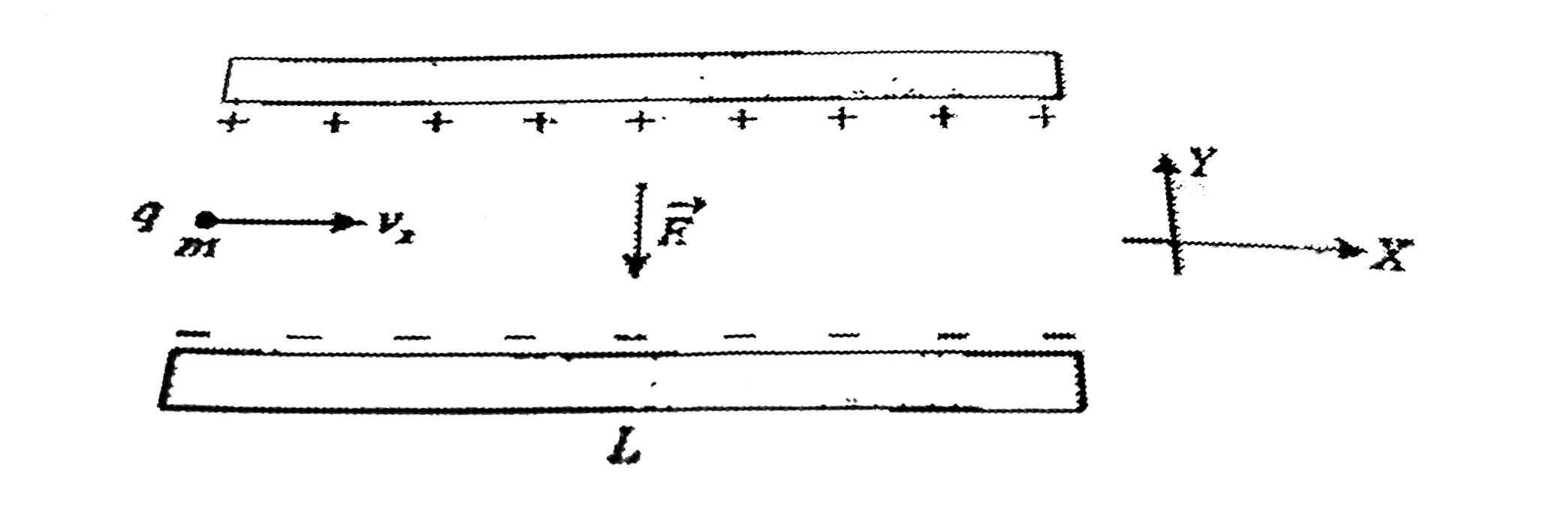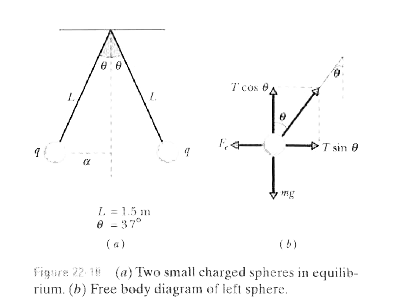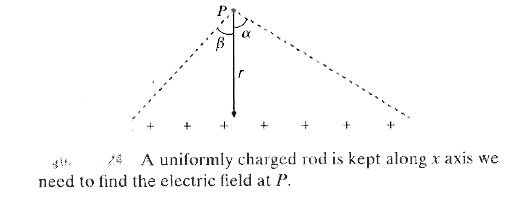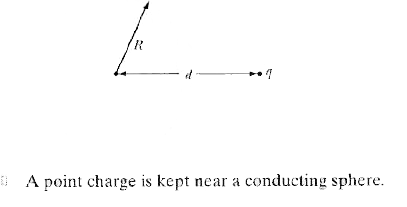SAMPLE PROBLEM from RESNICK AND HALLIDAY PHYSICS (HINGLISH) ELECTRIC CHARGES AND FIELDS for Class 12
| Class 12 | PHYSICS |
| Chapter | ELECTRIC CHARGES AND FIELDS |
| RESNICK AND HALLIDAY PHYSICS (HINGLISH) | SAMPLE PROBLEM |
| Medium | English |
| Academic Year | 2023-2024 |
Question 2
Figure 22-8c is identical to Fig. 22-8a except that particle 3 now lies on the x axis between particles 1 and 2. Particle 3 has charge q2=−3.20×10−19C and is at a distance (3/4)R from particle 1. What is the net electrostatic force →F1.net on particle 1 due to particles 2 and 3? View SolutionQuestion 3
Figure 22-8e is identical to Fig 22-8a except that particle 4 is now included. It has charge q4=−3.20×10−19C, is at a distance 34 R from particle 1, and lies on a line that makes an angle θ=60∘ with the x axis. What is the net electrostatic electrostatic electrostatic force →F1, net on particle 1 due to particle 2 and 4? View SolutionQuestion 12
Figure 22-26a shows a plastic rod with a uniform charge -Q. It is bent in a 120∘ circular arc of radius r and symmetrically paced across an x axis with the origin at the center of curvature P of the rod. In terms of Q and r, what is the electric field →E due to the rod at point P? View SolutionQuestion 16
Figure shows an assembly of deflecting plates A and B ofan ink-jet printer which causes moving ink droplets to deflect at desired displacements by continuously varying electric field between the plates. An ink drop with a mass m=1.3×10−10kg and a negative charge of magnitude q=1.5xx10−13C enters the region between the plates, initially moving along the x-axis with speed vx,=10m/s. The length of plates is L=1.6cm. The plates are connected with a varying voltage and thus produce an electric field at all points between them. Assume that field →E for some duration is constant and it is acting in downward direction as shown and has a magnitude of E=I.4×106N/C, find the vertical deflection of the drop at the far edge ofthe plate? As the gravitational force on the drop is very small relative to the electrostatic force acting on the drop, it can be neglected for this analysis. [6.4×10−4m]
 View Solution
View Solution





